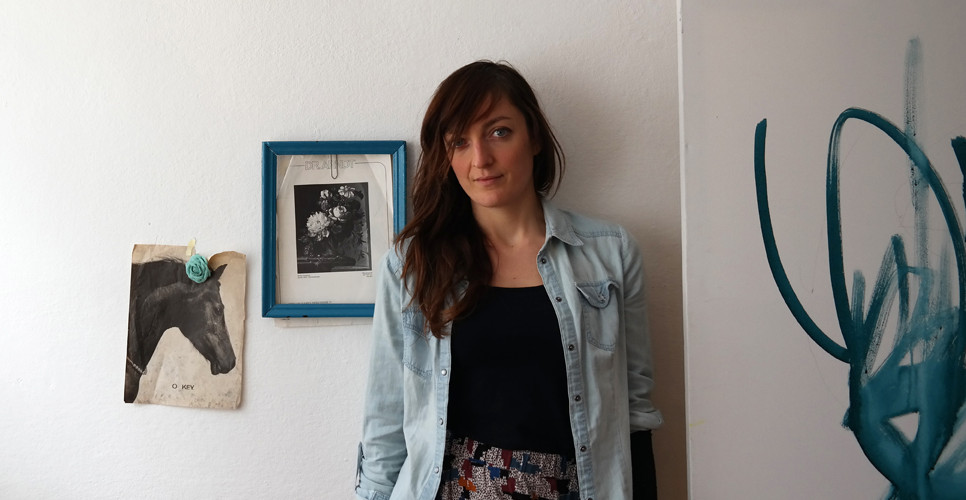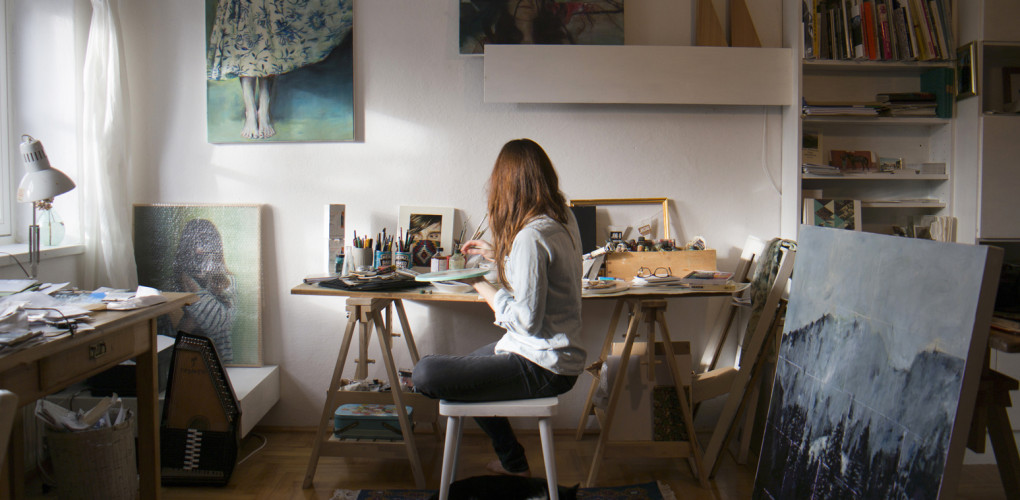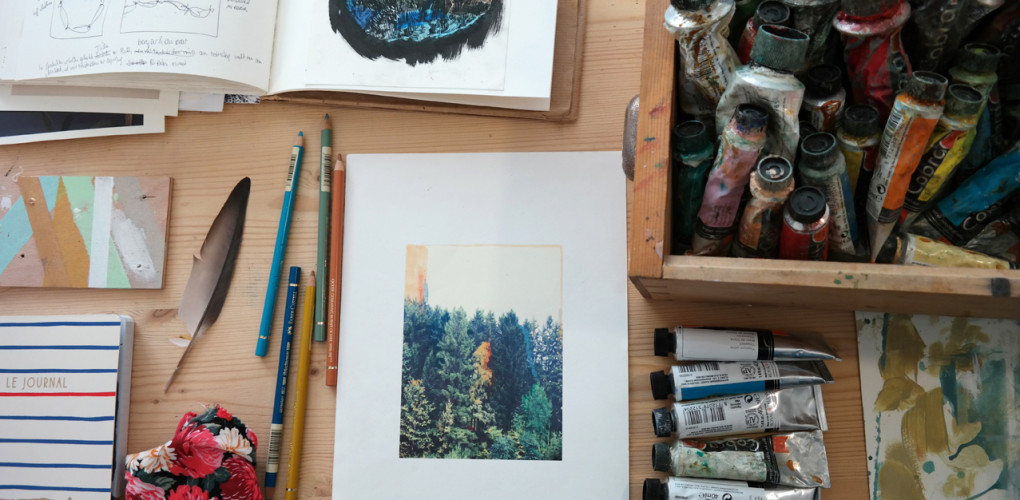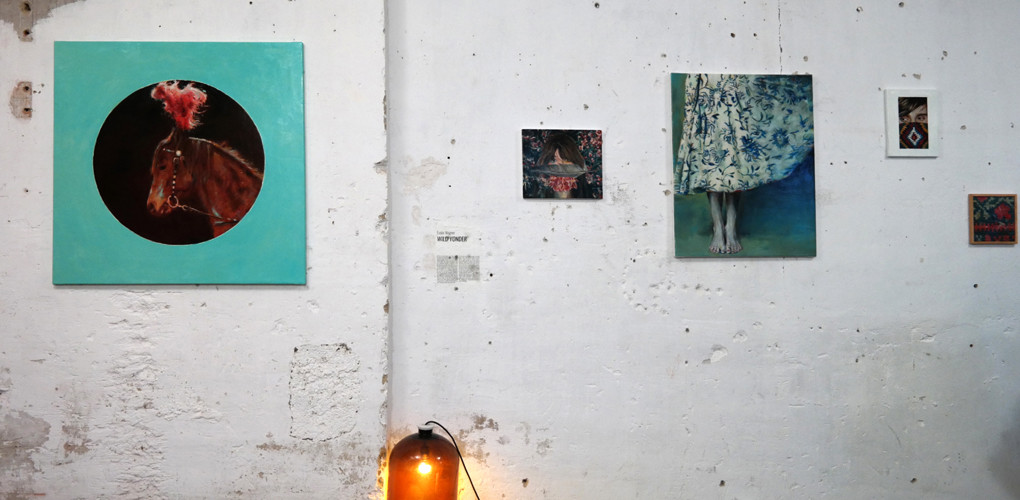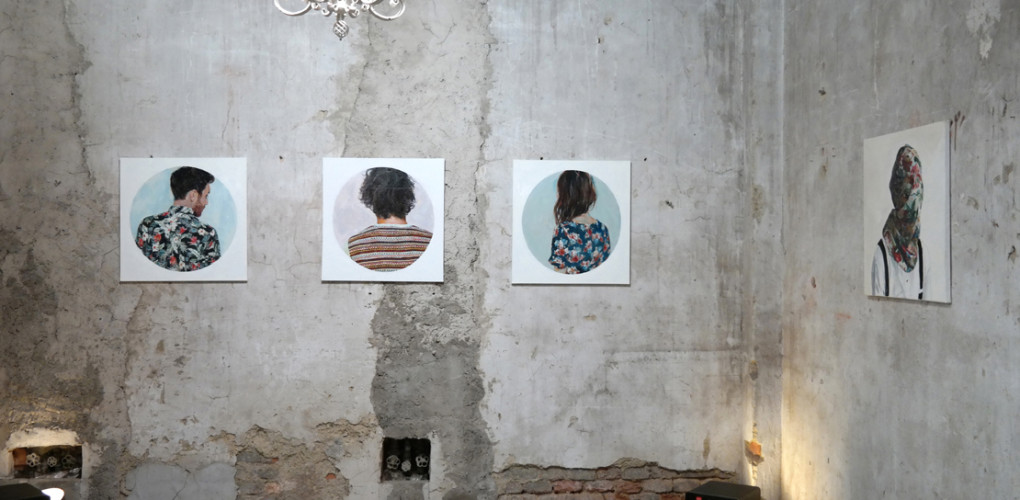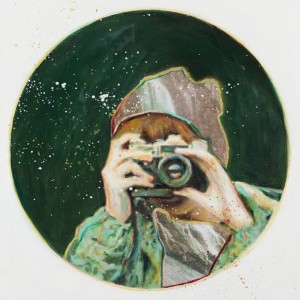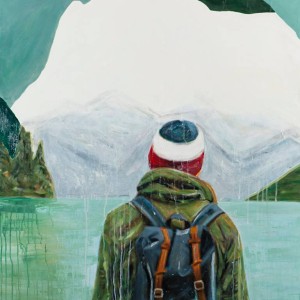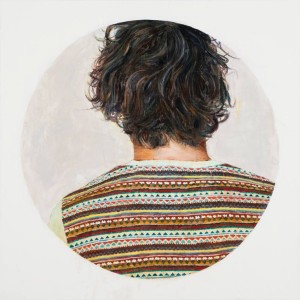One to Watch
 Evalie Wagner
Evalie Wagner
Evalie Wagner is an emerging Austrian artist. She earned an MFA in painting at the University of Art and Industrial Design in Linz, Austria and has a background in experimental art, textile design, and artistic education. Evalie often depicts flora and fauna in her portraits and still lifes, stemming from her experiences living on a farm in her youth. These works, which reference the Old Masters and more contemporary influences like Instagram, embody a yearning for nature and rural idyll in times of environmental, humanitarian, and financial crisis.
Evalie is the recipient of numerous awards and residencies. Most recently, she earned the Austrian Federal Chancellery Project Grant for ZOOart in Cuneo, Italy. She is also the recipient of the Bmukk Project Grant for the Young Artist Biennial in Ancona, Italy. Evalie’s works have been exhibited in various solo and group shows across Europe in countries including Austria, the Netherlands, and Germany.
What are the major themes you pursue in your work?
Making art keeps my mind awake. I get my inspiration from what surrounds me, with close links to contemporary subculture, music, literature, and design. I used to create albums with found footage from magazines, sketches, travel memories, and newspaper articles.
In my work, I refer to the Old Masters and depict contemporary portraits and still lifes with the spirit of my own generation. I mostly work with small formats and in an associative way, through metaphors. My work is mainly about a feeling, an atmosphere, that I want to convey. You can call it a form of a new romanticism, as I find that these themes from the 18th and 19th century are still up-to-date. In times of environmental, humanitarian, and financial crisis, you can find a return to tangible values, a yearning for rural idyll, and a oneness with nature. Even if it is not by chance, so much flora and fauna can be found in my work.
Basically, I try to dissolve themes into lightness, without following prevalent laws of logic and economy, and I want to leave a lot of freedom to the spectator. That’s why I call my work a “poetry of the approximate.” I like to keep things vague, by using cutouts and blurring. My paintings are like wild beasts–they do not disclose themselves immediately to everybody.
What was the best advice given to you as an artist?
I received many pieces of anxious advice, from people saying that I should not build my career on art in a time like this. That’s why I try to listen to myself and think that a certain idealism is a virtue. What I often heard, too, is that a reduction to only the essentials is important. In this sense, less is more. I try to keep to this sometimes, but not always.
Prefer to work with music or in silence?
Out of all art forms, music has the strongest emotional effect on me. Before starting to work, I always search for the appropriate soundtrack. Music carries me away into a mental landscape and situation. Currently, I listen to a lot of KEXP radio sessions and Woody Allen movie soundtracks, but my taste is changing all the time and is quite vast. It includes old blues songs, indie, folk, and even traditional folk and opera. Sometimes my art is inspired by lyrics, song lines or titles, such as Patrick Watson’s album Adventures in the Backyard, which I variegated into the title of my exhibition, Adventures in the Frontyard.
If you could only have one piece of art in your life, what would it be?
Maybe the installation The Visitors from the Icelandic artist Ragnar Kjartansson, or a portrait by Elizabeth Peyton? Or a painting by Vilhelm Hammershoi? A jukebox with my favorite songs– is that valid, too? Maybe only a meteorite or a photo from my family album. A collection of Wes Anderson movies. No, a real Caravaggio, or the whole city of Rome, which is an artwork to me. Maybe only a little sketch from a hut in the forest from Hans Hueber, the art teacher of the young Empress Sisi, who died forgotten. You see, I threw the well-meant advice to concentrate on one essential thing immediately to the wind.
Who are your favorite writers?
I collect words and phrases. I have been doing that for a long time. Before I started studying art at university, I attended a high school for agriculture. At that time, I already wrote short stories and poems. I am less fascinated by certain authors, but more by a story, a line, an intellectual world. I exchange most of my books with my sister and friends. I also like to go to little bookshops, both with new and used books, but have to be careful not to buy books only according to their title and cover. In the end, to make me buy a book, the last sentence on the last page has to persuade me. I read everything, from the old classics to pop literature. I usually read several books at the same time. Currently, I am reading Der alte König in seinem Exil by Arno Geiger, Augenstern by Harry Mulisch, a book on professional horse education by Alfonso Aquilar, and Night Train to Lisbon by Pascal Mercier. I can’t fall asleep without reading a few lines.
